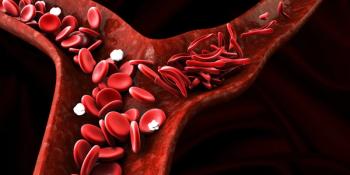
- August 2017 Immunization Supplement 0
Sharps Disposal: Assuring Regulatory Compliance During Off-Site Vaccination Clinics
Innovative pharmacists have taken immunizations, including the influenza vaccine, to off-site clinics located at employer sites, churches, malls, and various other community locations, with the intent to keep people healthy during the annual flu season rather than having them experience extended illnesses and loss of productivity.
The CDC published the startling fact that “
Not only is it important to follow state and federal regulations regarding vaccine administration, once a pharmacist has completed an off-site clinic, there are often questions regarding regulations surrounding the transport of full sharps containers. These regulations are as important as other considerations, such as insurance and billing, and include those from the Occupational Safety and Health Administration (OSHA), individual states, and the Department of Transportation (DOT).
COMPLYING WITH OSHA AND STATE REGULATIONS
Immunizers must comply with OSHA’s Bloodborne Pathogens Standard, as well as individual state rules on medical waste management,2,3 whether inside the pharmacy or at an off-site clinic. Pharmacists should be clear on sharps safety, the use of safety syringes, and disposal of syringes immediately after injection. In addition, there are a few disposal considerations that are important for immunizing pharmacists to remember:
- Always bring a sharps container and place it within arm’s reach and peripheral vision of the immunizer.
- After the injection, activate the safety device and immediately place the syringe into the sharps container.
- Secure the lid on the sharps container before transporting it within the facility, to the pharmacist’s vehicle, and during the drive back to the pharmacy.
- Have a small trash bag to contain materials generated during the clinic, such as alcohol swabs, Band-Aids, syringe packaging and caps, and vaccine vials.
- Most states allow trash disposal of vaccine vials, unless they contain residual live vaccine, in which case, they must be disposed of in a sharps container.
- Empty multidose vials can be placed in the trash. An unused or partial vial would be considered a hazardous waste pharmaceutical and must be disposed of as such.
- Some states require all glass vials to be disposed of in sharps containers.
COMPLYING WITH THE DOT
Pharmacists transporting full, or partially full, sharps containers between the pharmacy and the site of the vaccination clinic must comply with the DOT Materials of Trade (MOT) Exception4, which applies to all states. The MOT Exception allows pharmacists to transport sharps in a sharps container, as a part of doing business, without having to register with the state as a medical waste transporter. There are requirements that must be followed:
- The sharps container must be securely closed and placed within packaging that is strong, tight, securely closed, and secured against movement during transport.
- Nonsharps regulated medical waste must be placed in a single or combination package.
- If using a mailback system for sharps collection, the shipping box can serve as the outer packaging. Carrying the sharps container inside the shipping box when traveling will assure compliance.
- If immunizing at an off-site clinic in California, a log must be maintained with the sharps container packaging per California Health and Safety Code, Section 11796, Chapter 4(a).5 According to an e-mail from Alison Dabney from the California Department of Public Health, if using a mailback disposal system, a completed tracking form will suffice for the log.
- The pharmacist or sponsor of the off-site clinic must e-mail the local enforcement agency at least 72 hours before the event.5
COMPLYING WITH TRAINING REQUIREMENTS
Prior to participating in an off-site clinic, the pharmacist should have documentation of his/her annual bloodborne pathogens and sharps safety training1; medical waste management plan training, if required by the state2; DOT hazmat training as prescribed in 49 CFR Part 172, Subpart H6; and training on any applicable organization policies and procedures. For more information on the federal and state trainings needed for specific waste disposal programs, pharmacies can contact their medical waste disposal companies.
CONCLUSION
In addition to pharmacists providing immunizations inside of pharmacies, their participation in off-site clinics provides a valuable and convenient service to communities and employers. Complying with state and federal regulations that govern the transportation of full sharps containers generated at these clinics is a public safety and risk management responsibility.
REFERENCES
1. Make it your business to fight the flu. CDC website. cdc.gov/flu/pdf/business/ toolkit_seasonal_flu_for_businesses_and_employers.pdf. Accessed June 20, 2017.
2. Bloodborne pathogens and needlestick prevention. Federal Occupational Safety and Health Administration website. osha.gov/SLTC/bloodbornepathogens/index. html. Accessed June 20, 2017.
3. State regulatory map—medical waste. Sharps Compliance website. sharpsinc. com/regulatory-compliance. Accessed June 20, 2017.
4. Materials of trade exceptions, 49 CFR § 173.6 (2016). Government Printing Office website. gpo.gov/fdsys/pkg/CFR-2016-title49-vol2/xml/CFR-2016-title49- vol2-sec173-6.xml. Accessed June 20, 2017.
5. Medical Waste Management Act. California Department of Public Health website. archive.cdph.ca.gov/certlic/medicalwaste/Documents/MedicalWaste/2013/ MedicalWasteManagementAct.pdf. Accessed June 20, 2017.
6. Hazardous materials transportation training requirements. U.S. Department of Transportation website. phmsa.dot.gov/staticfiles/PHMSA/Hazmat/digipak/pdfs/ presentation/Training_Requirements(04_07).pdf. Accessed July 18, 2017.
Jan Harris, MPH, BSDH, is the director of environmental health and safety at Sharps Compliance, Inc.Robin Watson, MPH, MS, is the director of client services at Sharps Compliance, Inc.Wanda Lingner, RN, BSN, is a clinical specialist of strategic regulatory customer compliance at Sharps Compliance, Inc.
Articles in this issue
over 8 years ago
Child Immunization Schedule Changesover 8 years ago
Defining Your Pharmacy as a Wellness Destinationover 8 years ago
Back-to-School Immunizationsover 8 years ago
Pharmacy Immunizers and Co-Pay/Deductible WaiversNewsletter
Stay informed on drug updates, treatment guidelines, and pharmacy practice trends—subscribe to Pharmacy Times for weekly clinical insights.
















































































































































































































